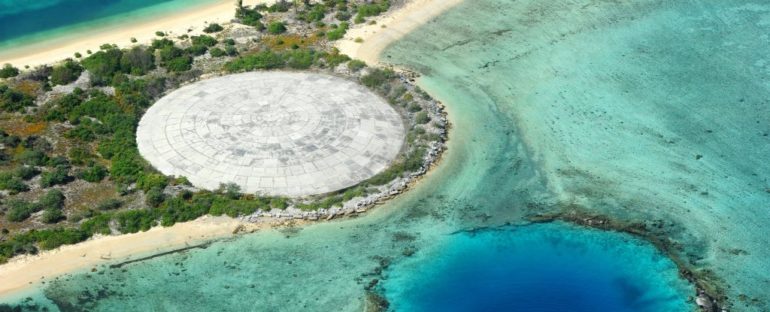In the Marshall Islands, locals have a nickname for the Runit Dome nuclear-waste site: They call it ‘The Tomb’.
In the Marshall Islands, locals have a nickname for the Runit Dome nuclear-waste site: They call it ‘The Tomb’.
The sealed pit contains more than 3.1 million cubic feet (87,800 cubic meters) of radioactive waste, which workers buried there as part of efforts to clean hazardous debris left behind after the US military detonated nuclear bombs on the land.
From 1977 to 1980, around 4,000 US servicemen were tasked with cleaning up the former nuclear testing site of Enewetak Atoll. They scooped up the contaminated soil, along with other radioactive waste materials such as military equipment, concrete, and scrap metal.
It all went into the Runit Dome, which the servicemen then covered with concrete.
In total, the crater holds enough radioactive waste to fill 35 Olympic-sized swimming pools. Most of that is irradiated soil carrying plutonium, an isotope that can cause lung cancer if inhaled.
But as seas have gotten higher in the area – the water has risen about 7 millimetres per year since 1993 – water has begun to seep into the soil beneath the dome.
Unlike the sealed dome on top, the bottom of the pit was never lined with concrete. So now, rising tides threaten to submerge the tomb – or crack it open.
The Runit Dome is chipping and cracking
Prior to the nuclear tests in the 1940s and 1950s, residents of Enewetak Atoll were exiled from their homes and relocated to nearby islands. Today, only three of the atoll’s 40 islands have been dubbed safe for human habitation. They are currently home to around 650 residents.
The island that hosts Runit Dome remains…



